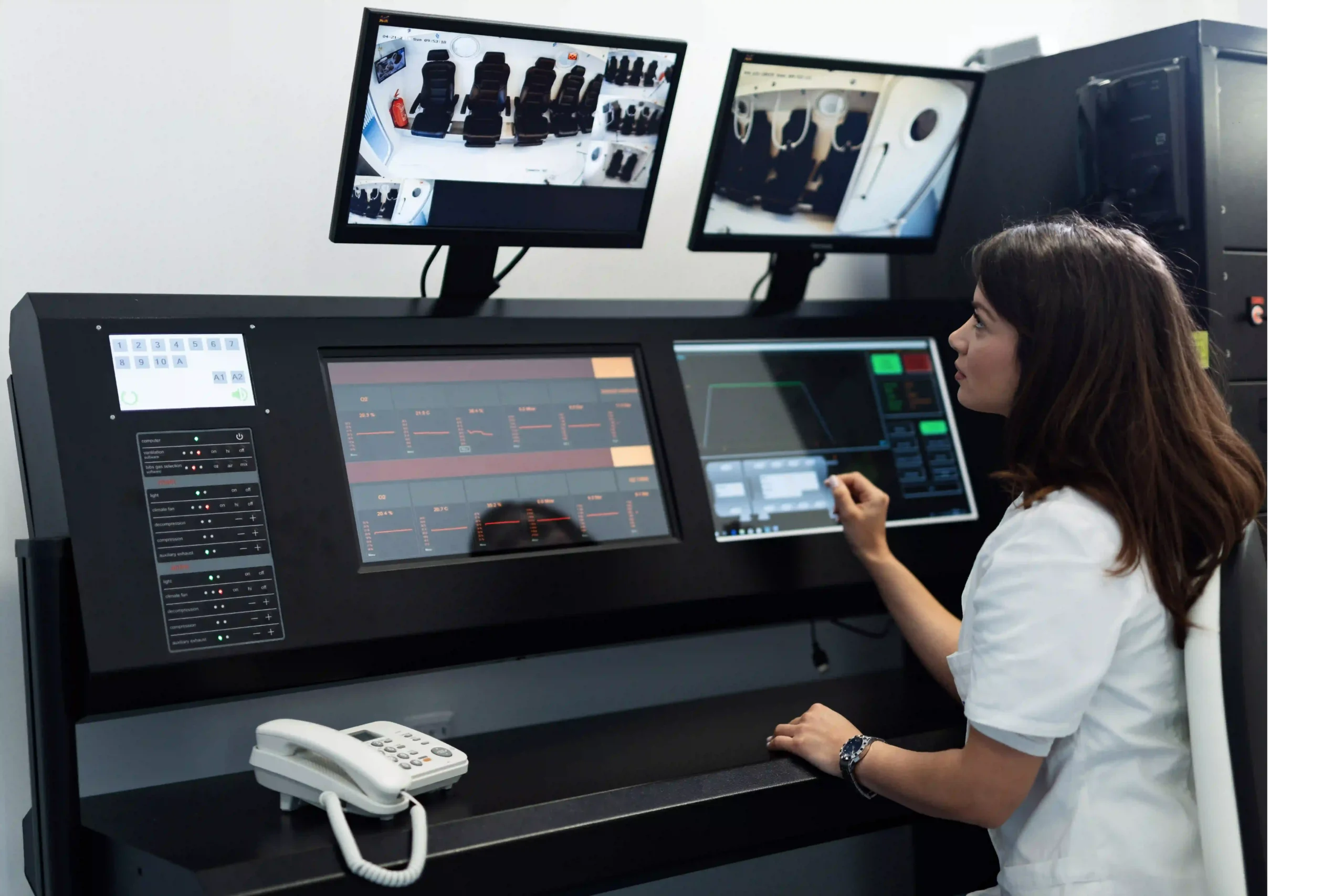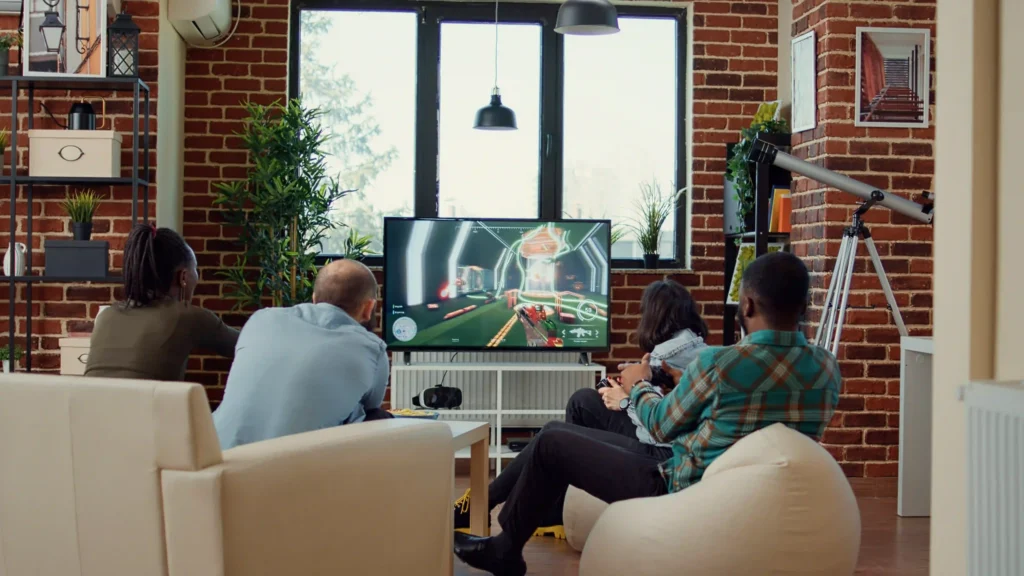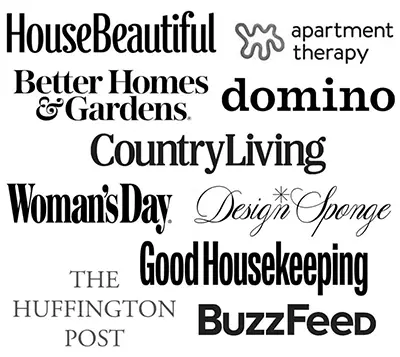Home theater automation brings together entertainment systems and smart tech to give you centralized control. You won’t need to juggle various remotes because one system maintains everything with voice or touch commands. The system can also work alongside lighting, climate settings, and other automated home features to create a seamless experience.
Recent data shows the smart home market hitting $155 billion in 2023, showing how people are adopting these systems.
How Smart Home Theater Tech Has Changed Over Time
DIY solutions for automating home theaters have advanced, moving past simple remotes. They now rely on AI to understand what users like and adjust settings on their own. With 5G connectivity, these systems run faster and work more.
Why Smart Home Theater Automation is Worth It
Better Viewing at Home
An automated setup can make your living room feel like a movie theater. It adjusts lighting, sound, and video all at once to suit whatever you are watching.
Comfortable to Use and Saves Time
These systems let you handle everything with one interface, so you no longer need to manage separate remotes or gadgets.
You can activate pre-set scenes that coordinate different functions with one command. For example, the “Good Night” mode could lower the blinds, dim the lights, start the projector, and set audio levels all at once.
Cuts Energy Use and Saves Money
Home theater automation systems in Los Angeles, CA, and other areas help manage energy by adjusting the power usage of devices. Systems like smart lighting darken rooms during movies, and automated climate tools help keep spaces comfortable while using energy.
Studies suggest that smart home tech may cut household energy use by as much as 15%. This drives many budget-conscious homeowners to try home theater automation as a do-it-yourself project.
Adding Value to Your Property
Home theater and automation installations can raise the property’s market value by a lot. Surveys found that 77% of buyers look for smart home setups centered on entertainment tech.
Best Systems and Tools to Automate Your Home Theater
Popular Brands and Options
Sound Systems
Sonos leads the way in wireless tech with its Atmos-enabled Arc soundbar. Bose’s Lifestyle 650 delivers high-end surround sound, while Yamaha’s YAS-209 balances cost with Alexa built-in to boost convenience.
Visual Features
LG and Samsung stand out in smart TVs. Their models work with home automation systems.
Control Tools and Hubs
Here are the main control options:
- Control4: A full home automation system
- Savant: Easy to use and simple for beginners
- Crestron: High-grade professional-level automation
- Logitech Harmony: A budget-friendly choice for starters
Prices go from $200 for standard setups all the way to over $1,500 for advanced systems.

Steps to Connect Your Home Theater to Smart Home Tech
Smart home theater automation works best when connected with other smart home gadgets. It builds a network where all parts link up to improve how you enjoy entertainment. Integra Home Theater
Adjusting Lighting for Better Viewing
Using smart lighting makes automated theaters much better. Brands such as Philips Hue or Lutron Caseta allow light settings you can program or automate. You could create a scene called “Drama Start” that dims the lights when the movie begins or one named “Pause” to brighten the lighting during breaks. Adding smart shades also helps control sunlight in your room.
Controlling Temperature for Comfort
Smart thermostats like Nest make it easy to adjust the temperature while watching Dramas. They help handle a range of 68-72°F, which is just right for a cozy viewing experience.
Voice Control and AI Helpers
You can handle devices hands-free by using AI assistants like Alexa or Google Assistant. Simple voice commands make it easy.
How to Set Up Your Automated Home Theater Step by Step
Planning the Setup
To start automating your home theater:
- Look at your room: Focus on dimensions and layout.
- Figure out your budget: Decide how much to spend.
- Decide what’s important: Pick the automation features you need.
- Make sure parts fit: Confirm that all devices will connect without issues.
Key Components to Begin
A basic system includes these items:
- A smart screen
- A sound system
- A device to control it all
- Lighting controlled by smart tech
- A remote or smartphone app to manage it
To set up your home theater automation, begin with these core parts. Later, you can add more complex features if required.
Network Setup Tips
Building a strong connection is crucial when setting up a smart home theater. Significant steps to build a reliable system include:
- Setting up a high-quality router to handle multiple devices
- Using a mesh network to cover bigger areas
- Adding wired Ethernet connections when possible
- Creating a dedicated network to handle smart devices
You need download speeds of at least 25 Mbps to stream. If you plan to stream on multiple devices, aim for 50 Mbps or higher.
Cost Breakdown: Planning Your Smart Home Theater Budget
The cost of automating a home theater depends on how complex the system is and whether you install it yourself or hire a professional.
Affordable Choices
Basic systems cost anywhere from $200 to $1,600, with an average of around $900. This includes smart TV features and simple automations. If you plan to set up everything yourself, expect to spend about $100 to $300 on tools.
Mid-Range Setups
Installations within the $2,000 to $15,000 range include:
- Advanced AV gear
- Dedicated system controls
- Multi-zone functionality
- Expert-level programming
High-End Systems
Luxury setups priced from $10,000 to $150,000 or higher provide:
- Personalized designs
- Soundproofing or acoustic optimization
- Commercial-grade gear
- Complete automation
- Ongoing professional support
On average, installation costs run about $85 per hour, and more intricate systems often require 20 hours or more to complete setup.
Errors to Watch Out For
Technical Errors
- Failing to plan networks
- Hardware or software compatibility problems
- Bad placement of components
Planning Errors
- Buying unnecessary equipment
- Relying too much on cloud services
- Designing interfaces that are too confusing to use
A survey on smart homes found that 20% of users experience frustrations with devices. Careful planning can prevent such problems.

Trends Shaping the Future of Smart Home Theaters
Smart home theater automation is changing, especially in tech-heavy areas like Los Angeles, CA. Knowing about these trends can help people make smarter choices.
AI-Powered Customization
AI now plays a big role in home theaters. It tailors settings to match user preferences and the type of content being watched.
Immersive Tech Advancements
Developments in VR and AR are transforming DIY home theater setups. These upgrades bring virtual IMAX-like experiences and better ways to enjoy content.
Focus on Eco-Friendly Systems
Energy-saving systems, better power-handling technology, and green materials will shape future automated home theaters.
The Expanding Smart Home Industry
The smart home market is growing fast. A Statista report shows that the global market for smart homes could reach $80.21 billion by 2025. The increasing need for smart devices makes this a great time to switch to automation and enjoy its advantages.
Internal Links to Learn More
- Dive into our article Smart Home Automation: The Ultimate Guide to see how you can bring smart tech into every corner of your home.
- Explore our guide Choosing the Best Smart Thermostat for Your Home to pick the right thermostat and set up the ideal climate control for your home.
Frequently Asked Questions
What is home theater automation?
Home theater automation means connecting things such as your audio and video systems, lighting, temperature settings, and even security in your home into one system you can handle easily & remotely or let operate on its own.
How does work automation in a home theater system function?
Home theater automation connects devices like your TV, speakers, lights, and thermostat to one main smart hub or platform such as Amazon Alexa, Google Assistant, or Apple HomeKit. After setting this up, you can control the devices using voice commands, apps, or routines that activate at certain times or with specific triggers.
Why consider automating your home theater?
The main advantages of automating a home theater include: Ease of Use: Manage all your entertainment devices using one simple command. Better Atmosphere: Change lighting, sound, and temperature settings to fit what you're doing. Save Energy: Use automation to lower energy waste with lights and climate control. Boost Property Appeal: Smart home technology can make your house stand out to buyers.
Can I automate an existing home theater system, or do I need to start from scratch?
You don’t need to rebuild your setup from the ground up. Most modern automation systems are compatible with a wide range of existing audio-visual and smart home devices. With the right hub or controller, you can retrofit your current system for automation without replacing everything.
Is home theater automation difficult to install and manage?
Not at all. While professional installation can ensure everything is set up perfectly, many systems are designed for easy DIY installation. Once installed, most platforms offer user-friendly apps that make managing your devices simple, even for beginners.
Conclusion: Should You Go for Smart Home Theater Automation?
Smart home theater automation boosts entertainment experiences and can raise property value. Getting it right takes proper planning and picking the right parts that work together. Begin with the simple and then add more advanced features over time. Think about what you already own and figure out which automation options best fit your lifestyle. Even taller improvements can create noticeable changes.


